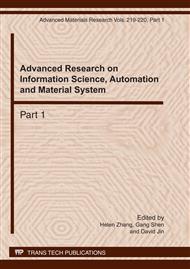p.179
p.183
p.187
p.191
p.195
p.202
p.206
p.210
p.214
The Effect of Aging Heat Treatment on the Sliding Wear Behavior of Cu-Al-Fe-(x) Alloys
Abstract:
Wear behaviour of aged casting Cu-Al-Fe-Be and Cu-Al-Fe-Ni aluminum bronzes was studied in this paper. The microstructures, mechanical properties of hardness and tensile strength, were evaluated experimentally. The friction and wear resistance, and the electrical resistivity of the materials were assessed. The results show that mechanical properties of the Cu-Al-Fe-Be alloy have been improved by solution treatment at 950°C for 120 min followed by aging at 350°C for 120 min, whilst the most suitable heat treatment for the Cu-Al-Fe-Ni alloy was solution treatment at 950°C for 120 min followed by aging at 450°C for 120 min. In the wear testing, the as-cast alloys was dominated by abrasive wear, and the increase in load and sliding velocity, the adhesive wear and oxidation wear dominated. The experimental results also showed that the Cu-Al-Fe-Be alloy possessed higher hardness and tensile strength, lower friction coefficient and lower wear rate compared to the Cu-Al-Fe-Ni alloy.
Info:
Periodical:
Pages:
195-201
Citation:
Online since:
March 2011
Authors:
Keywords:
Price:
Сopyright:
© 2011 Trans Tech Publications Ltd. All Rights Reserved
Share:
Citation:


